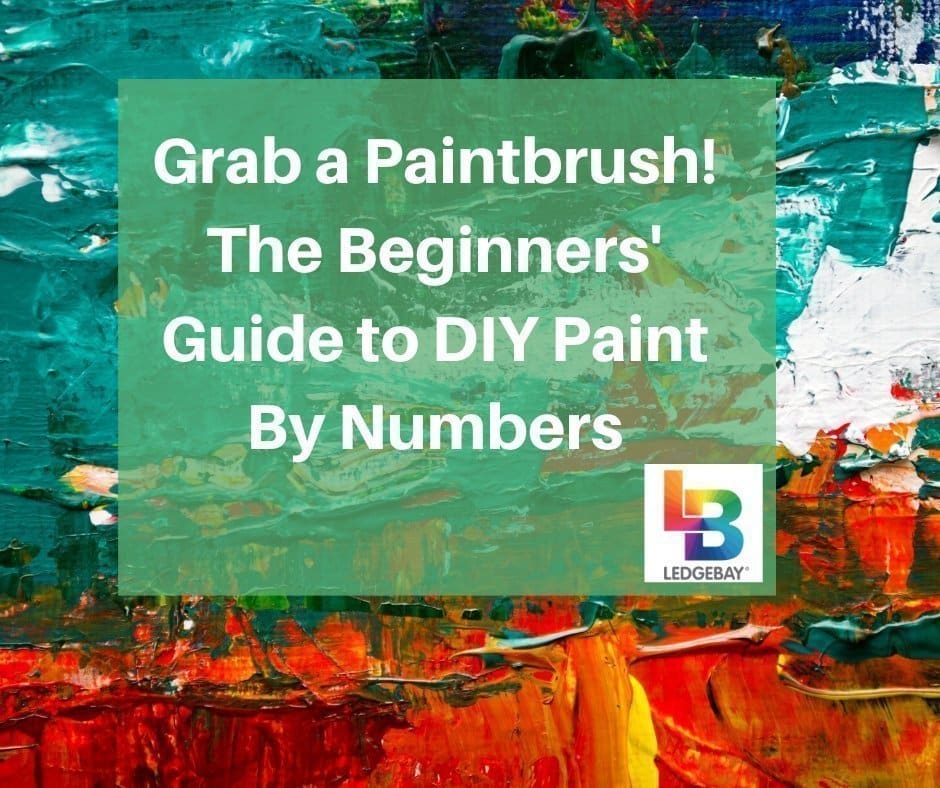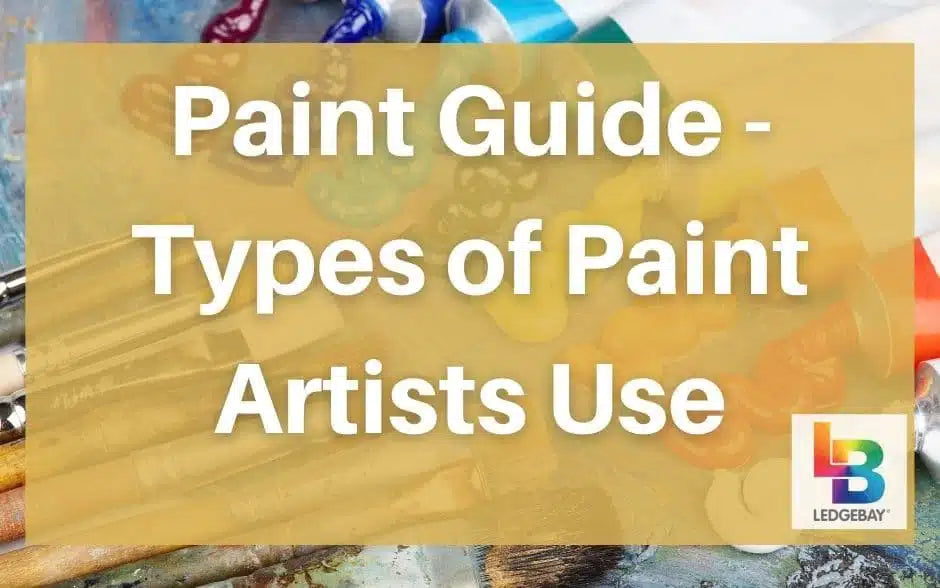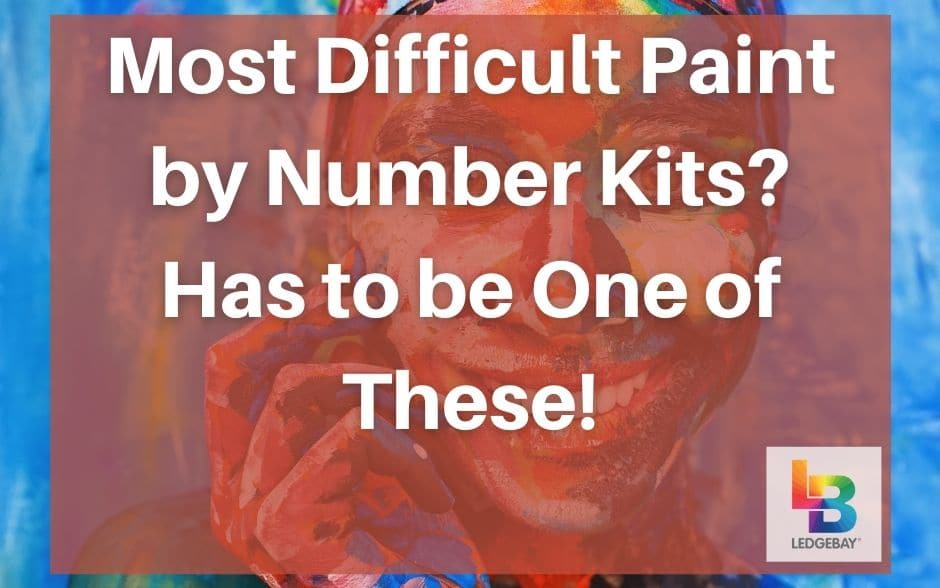As children, we created art without any reservations. We dove into a project with enthusiasm and all the freedom to enjoy the process.
It's time to claim that euphoric feeling with the help of DIYpaint by number s.
Let go of all your worries about not being 'an artist' or 'good enough'. These easy-to-dopaint projects help adults of all experience levels create something beautiful. Instead of focusing on the bad, focus only on thefun and relaxation .
Uncertain where to begin? Keep reading! We'll go through all of the steps you need to know to get started on your firstpaint by numbers project.
Some people might ponder this question, uncertain what the benefits are when compared to other kinds of art projects.
The main reason is that it's a lot of fun. It removes all of the stresses that often come hand-in-hand withart creation and instead lets you focus on the relaxing part of it all. It lets you practice without any anxiety.
You get to movepaint around on a canvas without worrying about things like whether the picture will look good or if the proportions are wrong. Thepaint by numbers projects already solved all of those problems for you.
All you need to do is enjoy yourself and paint.
This is thesurface you'll paint upon. The entire picture has many different sections, each with its own number. Eachnumber corresponds with a specific paint pot.
There's a lot of information on a single canvas like this, with all of the numbers staring up at you. That's why it's always a good idea to take a few minutes getting used to the layout. It's not as confusing as it first appears!
Acrylic is an opaque paint , letting you cover up those numbers on the canvas with ease. Watercolor, on the other hand, is transparent and makes it much harder to cover up the numbers.
Acrylic dries fast, making it easy to work with and there's only a short waiting time between layers. The colors are vibrant and bold, bringing out the beauty in thepainting you're creating .
Eachpaint kit comes with at least one brush to help you complete your masterpiece . Sometimes it's a good idea to get somedetail brushes if the project has a lot of tiny areas.
These brushes all need cleaning after everypainting session to keep them in top condition.
A little bit of warmwater and dish detergent helps ensure you get all of the paint out of the bristles. Skipping this part might mean that you'll have a paint-stiffenedbrush when you go to paint next time!
Don't forget to dry them off on a towel afterward. Leaving brushes sitting in water tends to ruin them!
A tablecloth you don't mind getting ruined, a large towel, or a plastic covering all work well for this, too.
To rinse off your brush in between colors, you'll want a jug of water A throwaway cup, an old yogurt tub, an old jam jar
Once you're done with a particular color, swirl the paintbrush into the water until it's clean. You don't want to contaminate one color with another, or else your colors become muddy!
Some paper towels or rags work well to dry off your brush after it's clean. They're also great for helping clean up any spilled paint.
This is not a necessary step as normalacrylic paints don't harm the canvas . However, some people enjoy this extrastep as it lets the paint lay down on the canvas smoother.
If yourcanvas isn't fixed to a frame already, tape it down to your workspace. This keeps it in place while you work and you won't have to worry about it moving on you.
It's often best to paint the biggest areas first. It's a very satisfying way to go through the numbers. You'll see the painting come together faster than if you start with small details first.
After you've done a couple of paintings, you'll find the way that works best for you, so don't be afraid to try different things!
Remember torinse the used brush in a cup of clean water before diving into a new color pot!
Continue in this way until you'vecompleted the entire painting .
To ensure that your project stays protected, you'll want to seal the paint into place. There are specific types ofpaint sealant for acrylic paints on the market that do a good job.
If you're a crafter, however, chances are good you have something laying around that does the same job. A decoupage medium—the mostfamous of which is ModPodge -- works well as a paint sealer.
[amazon box="B0018N7J8E"]
Brush on a coat or two of this medium, allowing each layer to dry in between application, and yourpainting has all the protection it needs .
Don't forget to set thecanvas into a frame so that you're able to hang it up and show off your creative hard work!
Don't be afraid to let loose your creativity. It might feel overwhelming when you first pull out that paintbrush but keep at it! With the help of these projects, you'll gain plenty of experience and practice with painting.
With their help, you'll sooncreate works of art like a professional.
Ready to get started? Check out our selection ofpaint by numbers kits !
It's time to claim that euphoric feeling with the help of DIYpaint by number s.
Let go of all your worries about not being 'an artist' or 'good enough'. These easy-to-dopaint projects help adults of all experience levels create something beautiful. Instead of focusing on the bad, focus only on thefun and relaxation .
Uncertain where to begin? Keep reading! We'll go through all of the steps you need to know to get started on your firstpaint by numbers project.
Why Create a Paint By Numbers Project?
[amazon box="B083FF1Z5H"]Some people might ponder this question, uncertain what the benefits are when compared to other kinds of art projects.
The main reason is that it's a lot of fun. It removes all of the stresses that often come hand-in-hand withart creation and instead lets you focus on the relaxing part of it all. It lets you practice without any anxiety.
You get to movepaint around on a canvas without worrying about things like whether the picture will look good or if the proportions are wrong. Thepaint by numbers projects already solved all of those problems for you.
All you need to do is enjoy yourself and paint.
Getting to Know Your Materials
Understanding the different materials you'll work with is an importantstep to your first paint by numbers project. You'll want to take a good look at everything before youstart painting . This way you always have a general idea of what you're working with and how it all fits together as a whole.Canvas
[amazon box="B01FCHZOII"]This is thesurface you'll paint upon. The entire picture has many different sections, each with its own number. Eachnumber corresponds with a specific paint pot.
There's a lot of information on a single canvas like this, with all of the numbers staring up at you. That's why it's always a good idea to take a few minutes getting used to the layout. It's not as confusing as it first appears!
Paints
Paint by numbers come with acrylic paint in little pots of color with numbers on the lids. It's possible to find projects with other kinds of paints, such as watercolor, but acrylic is often the best fit. Even more so if you're a beginner.Acrylic is an opaque paint , letting you cover up those numbers on the canvas with ease. Watercolor, on the other hand, is transparent and makes it much harder to cover up the numbers.
Acrylic dries fast, making it easy to work with and there's only a short waiting time between layers. The colors are vibrant and bold, bringing out the beauty in thepainting you're creating .
Brushes
[amazon box="B07ZMJKMWQ"]Eachpaint kit comes with at least one brush to help you complete your masterpiece . Sometimes it's a good idea to get somedetail brushes if the project has a lot of tiny areas.
These brushes all need cleaning after everypainting session to keep them in top condition.
A little bit of warmwater and dish detergent helps ensure you get all of the paint out of the bristles. Skipping this part might mean that you'll have a paint-stiffenedbrush when you go to paint next time!
Don't forget to dry them off on a towel afterward. Leaving brushes sitting in water tends to ruin them!
Preparing to Paint
Before youdive into painting , there are a few things you'll want to prepare first. These extra steps make sure that you have everything youneed while painting and for any accidents that might happen.Protecting Your Workspace
The first thing you'll want to do is gather up some old newspapers and lay them out on the table you plan to paint on. No matter your skill level, accidents happen to everyone. It's good to have something to protect your table from any spilled paint.A tablecloth you don't mind getting ruined, a large towel, or a plastic covering all work well for this, too.
Gathering Your Tools
Gather everything you need into one place so that it's all close at hand whenever you need it. You already know to have your paints, brushes, and prepared canvas at hand, but there are a few more things to have nearby.To rinse off your brush in between colors, you'll want a jug of water A throwaway cup, an old yogurt tub, an old jam jar
Once you're done with a particular color, swirl the paintbrush into the water until it's clean. You don't want to contaminate one color with another, or else your colors become muddy!
Some paper towels or rags work well to dry off your brush after it's clean. They're also great for helping clean up any spilled paint.
Prepping the Canvas
This is an extra step that isn't always necessary, but it does often help in the painting process. Gesso is apainting medium that goes on as a first layer . It helps protect thecanvas from damage and also keeps the canvas from absorbing the paint too fast.This is not a necessary step as normalacrylic paints don't harm the canvas . However, some people enjoy this extrastep as it lets the paint lay down on the canvas smoother.
If yourcanvas isn't fixed to a frame already, tape it down to your workspace. This keeps it in place while you work and you won't have to worry about it moving on you.
The Painting Process
Now it's time for the most exciting part: painting! Remember to take time to slow down and enjoy the process as you create something beautiful and colorful.Number Selection
It's up to you tochoose which way to tackle the painting portion.Choose whether you want to follow the numbers in ascending or descending order, or if you prefer to pick and choose depending on color .It's often best to paint the biggest areas first. It's a very satisfying way to go through the numbers. You'll see the painting come together faster than if you start with small details first.
After you've done a couple of paintings, you'll find the way that works best for you, so don't be afraid to try different things!
Step-By-Step
Although there's no wrong way tocomplete the painting , here's a tried-and-true method that ensures a stunning result.- Find the biggest area and double-check its corresponding paint color.
- Select an appropriate brush (no tiny brushes for big areas or big brushes for tiny areas!)
- Pop open the paint pot and dip in the paintbrush. A little paint goes a long way, so don't dip too far.
- Find the numbered section again, and begin brushing the paint onto the canvas.
- Once you've filled that first section, find the next same-numbered section and continue going through the entire canvas.
- After you're done painting in all of the same-numbered sections, allow the layer to dry. Give it a good 10 minutes to be certain.
- Then it's time to apply a second coat to those same areas you've filled. This ensures a smoother and more opaque layer so that the finished result is beautiful and no numbers peek through.
Remember torinse the used brush in a cup of clean water before diving into a new color pot!
Continue in this way until you'vecompleted the entire painting .
Finishing Your Masterpiece
Now that yourpainting is full of vibrant colors , there are only a few more steps before you're done.To ensure that your project stays protected, you'll want to seal the paint into place. There are specific types ofpaint sealant for acrylic paints on the market that do a good job.
If you're a crafter, however, chances are good you have something laying around that does the same job. A decoupage medium—the mostfamous of which is ModPodge -- works well as a paint sealer.
[amazon box="B0018N7J8E"]
Brush on a coat or two of this medium, allowing each layer to dry in between application, and yourpainting has all the protection it needs .
Don't forget to set thecanvas into a frame so that you're able to hang it up and show off your creative hard work!
Bring Out Your Inner Artist with DIY Paint By Numbers
Now that you know all of the differentsteps required to make your first DIY paint by numbers project, it's time to get started. Let that childhood excitementguide your hand as you create something vibrant and beautiful.Don't be afraid to let loose your creativity. It might feel overwhelming when you first pull out that paintbrush but keep at it! With the help of these projects, you'll gain plenty of experience and practice with painting.
With their help, you'll sooncreate works of art like a professional.
Ready to get started? Check out our selection ofpaint by numbers kits !











